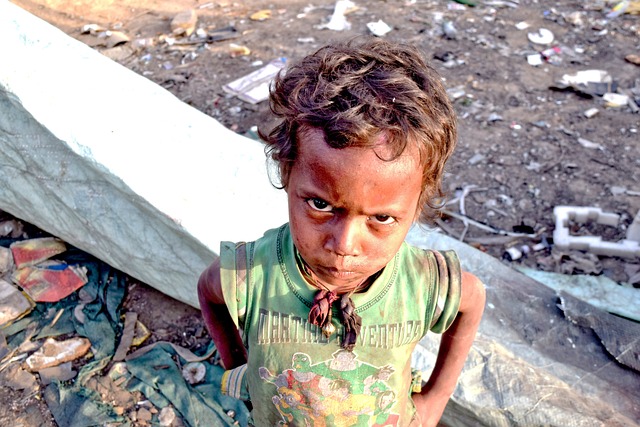5. Foreign Aid and Development Assistance

Development aid is that it provides financial resources to countries that lack the necessary capital to invest in their economies. This can lead to the creation of jobs, improved infrastructure, and higher standards of living. Development aid can also help to promote economic growth and reduce poverty by supporting initiatives such as education, healthcare, and access to clean water.
Foreign aid neither a cure for all, nor a failure
This week, I have been reflecting on “Development Aid, or, official Development Assistance”
Localisation of Development Assistance in developing nations is a critical process that involves adapting global development goals to the local context and implementing them at the national, regional, and local levels. Development aid funding is a vital resource that developed countries and international organizations provide to help developing nations achieve economic growth, reduce poverty, and improve living conditions for their people.
This is an article 5 in series of 16
Development aid is a complex issue with both benefits and drawbacks. While it can provide much-needed resources to developing countries, it can also create dependency and perpetuate poverty. The geography of aid distribution is also a critical issue, with concerns about unequal distribution and the motives behind aid allocation. As a student of Global Development, it is important to critically examine the role of development aid in promoting global development and advocate for more equitable and effective aid policies.
→ What is the Development Aid?
→ Development aid funding, a.k.a. ‘Foreign aid’
→ Critics of Development Aid
→ The Geography of Aid Distribution
→ What is the Development Aid?
Official Development Assistance (ODA) is a primary form of development aid that is regulated by the Organisation for Economic Co-operation and Development (OECD). While development aid has been acknowledged as a significant tool for global development, it has advantages and disadvantages that must be critically examined to ensure that it is effective.
One of the benefits of development aid is that it provides financial resources to countries that lack the necessary capital to invest in their economies. This can lead to the creation of jobs, improved infrastructure, and higher standards of living. Development aid can also help to promote economic growth and reduce poverty by supporting initiatives such as education, healthcare, and access to clean water. In addition, it can assist with disaster relief and humanitarian crises.
For instance, development aid helped to rebuild the infrastructure and provide essential services in Haiti after the 2010 earthquake.
→ Development aid funding, a.k.a. ‘Foreign aid’
Development aid funding, also known as foreign aid, refers to financial and technical assistance given by developed countries or international organizations to developing nations to promote economic growth, reduce poverty, and improve the living conditions of the people. Official Development Assistance (ODA) is the most commonly used form of development aid, which is regulated by the Organisation for Economic Co-operation and Development (OECD). While development aid has been widely accepted as a crucial tool for global development, it also has its advantages and disadvantages.
Having his can lead to the creation of jobs, improved infrastructure, and higher standards of living. Development aid can also help to promote economic growth and reduce poverty by supporting initiatives such as education, healthcare, and access to clean water. In addition, it can assist with disaster relief and humanitarian crises.
→ Critics of Development Aid
However, development aid has also been criticized for creating dependency, corruption, and political instability in recipient countries. Critics of development aid argue that it can hinder economic growth and perpetuate poverty. William Easterly, a development economist, has been one of the most prominent critics of development aid.
In his book, The White Man’s Burden: Why the West’s Efforts to Aid the Rest Have Done So Much Ill and So Little Good, Easterly argues that development aid is ineffective and that it perpetuates poverty in developing countries. He contends that aid does not address the root causes of poverty, such as poor governance and lack of economic freedom.
Similarly, Dambisa Moyo, a Zambian economist, in her book Dead Aid: Why Aid Is Not Working and How There Is a Better Way for Africa, argues that aid creates a culture of aid dependency and stifles economic growth in recipient countries. She contends that development aid does not encourage self-reliance and entrepreneurship, which are crucial for sustainable economic growth. She suggests that African countries should focus on domestic resource mobilization, trade, and foreign direct investment as alternative sources of financing for their development.
Critics of development aid also argue that it can create dependency, corruption, and political instability in recipient countries. These critics include William Easterly, a development economist who argues that development aid is ineffective and that it perpetuates poverty in developing countries. Another critic is Dambisa Moyo, a Zambian economist who argues that aid creates a culture of aid dependency and that it stifles economic growth in recipient countries.
→ The Geography of Aid Distribution
Another critical issue related to development aid is the geography of aid distribution. While some countries receive large amounts of aid, others receive little or none at all.
According to a report by Oxfam, the top ten aid recipients receive 70% of all development aid, while many of the poorest countries receive less than 1%. This has led to concerns about the effectiveness of development aid, as well as questions about the motives behind aid distribution.
In addition, the conditions attached to development aid can also create challenges for recipient countries. For example, the International Monetary Fund (IMF) and the World Bank often require developing countries to implement structural adjustment programs (SAPs) as a condition for receiving aid. These programs often involve cutting public spending, privatizing state-owned enterprises, and liberalizing trade policies. While these policies may be necessary for economic reform, they can also have negative social consequences, such as the erosion of labor rights and social safety nets.
In conclusion, development aid is a complex issue with both benefits and drawbacks. While it can provide much-needed resources to developing countries, it can also create dependency and perpetuate poverty. The geography of aid distribution is also a critical issue, with concerns about unequal distribution and the motives behind aid allocation. As a student of Global Development, it is important to critically examine the role of development aid in promoting global development and advocate for more equitable and effective aid policies.



